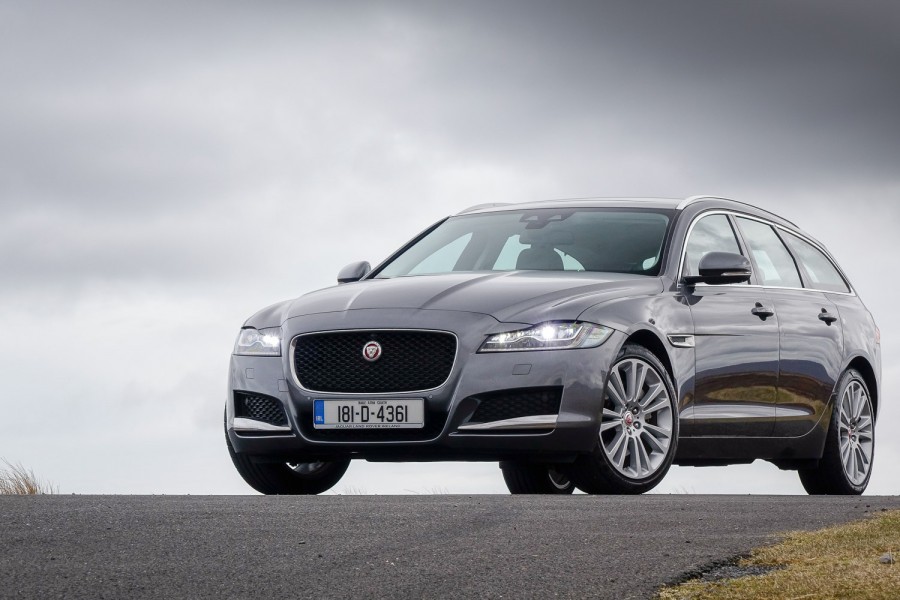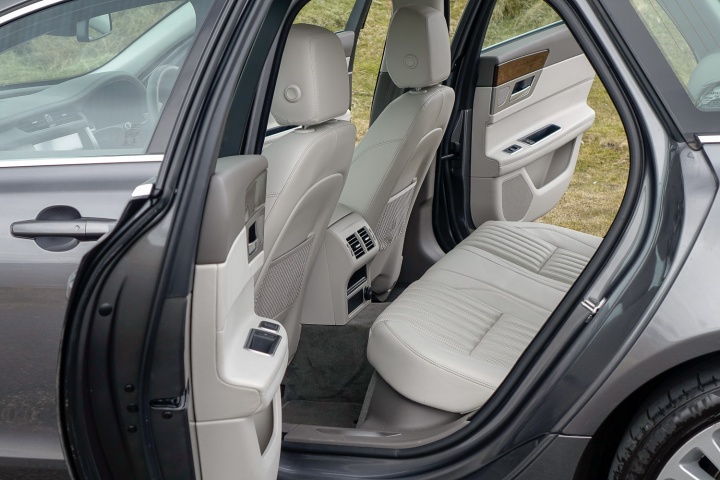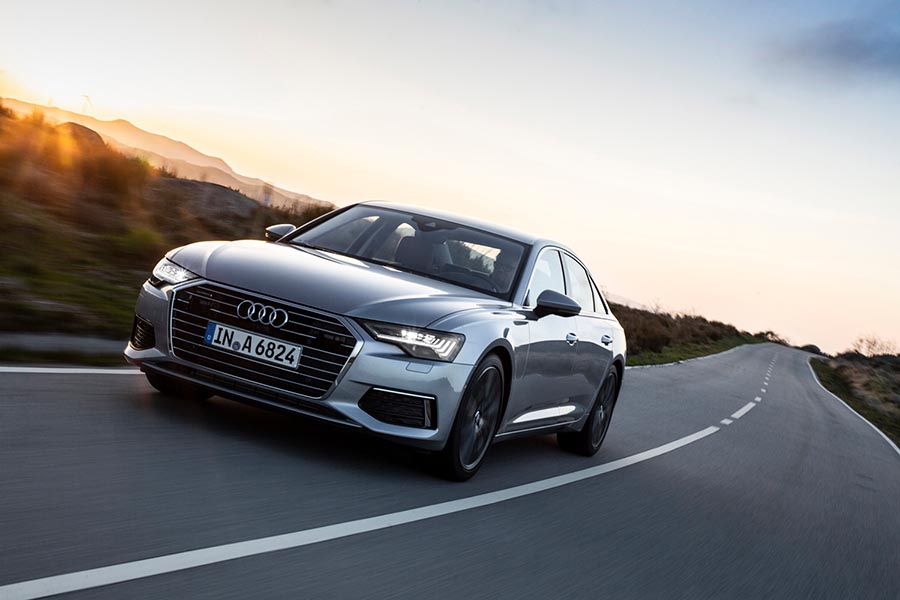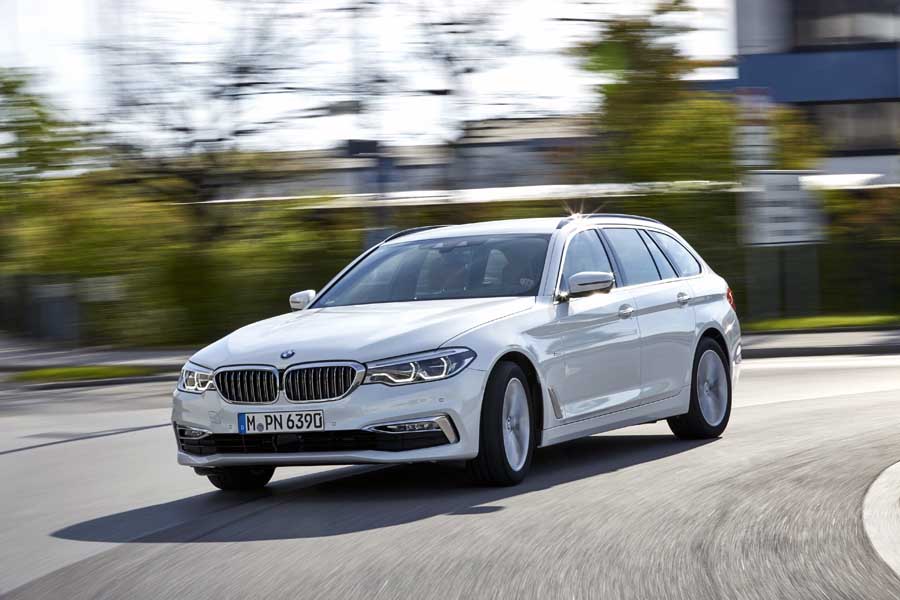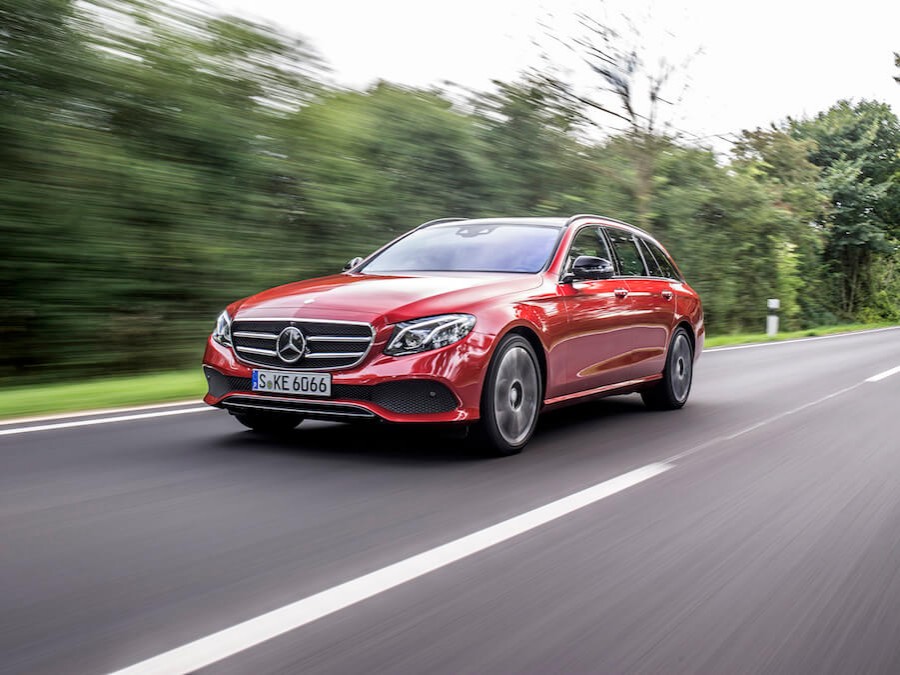Good: classy appearance, comfortable and good to drive
Not so good: four-cylinder diesel could be quieter
We were more or less ready for Jaguar to give up on estate cars. All the signs and very strong rumours suggested that this generation of the XF executive would never sire a wagon. The blame was put at the feet of consumers around the globe that have fallen out of love with practical estates in favour of SUVs. But someone within Jaguar redid the sums and there must still be a business case for producing a new XF Sportbrake, as here it is in the metal and on sale in Ireland from a little under €50k.
And what lovely metal it is. The Jaguar XF saloon is a subtly attractive car, but some (us included) reckon it's a little too like its little brother, the XE, in its design for its own good. Jaguar has already countered this criticism by saying that's a good thing for brand identity and recognition, but I'm not sure that XF owners would want their car mistaken for a lesser model. One solution is to go for the XF Sportbrake estate, as it alters the appearance considerably, making the car look larger, longer and, well, more impressive.
That upright rear end means a massive boot, holding 565 litres with the rear seats in use or up to 1,700 litres with them folded down flat. However, it's such a lovely, carpeted space that you'll not want to sully it with anything remotely dirty. Access to the back seats is via wide opening doors and it's spacious back there, with the usual proviso in this class that the raised floor in the middle means less legroom for the centre passenger. Kids will be fine. They do at least get their own air vents and power supply.
Obviously, the front of the cabin is more impressive. It's comfortable and spacious, and there's a distinctly cossetting feel to it as you sit low down. We have no issues with the quality of the materials used, even if the design is quite understated. That's mixed with digital instruments and a widescreen touchscreen in the middle, plus Jaguar's rotary drive selector that rises out of the centre console dramatically when you start the car up. The steering wheel is good to hold and it's easy to get comfortable in general.
Behind that wheel are apologetically small plastic gearchange paddles, but thankfully there's little reason to use them, as the eight-speed automatic is well-suited to the output of the 2.0-litre diesel engine under the bonnet. If you want more response, use the Sport mode of the transmission or choose the effective Dynamic driving setting. Our test car had the 180hp version of this engine, which gives the car adequate performance, thanks no doubt to the chunky 430Nm torque figure, but it never feels particularly quick. For that reason, we'd avoid the 163hp model. However, the XF proves to be quite economical and civilised on a long journey, even if it is too noisy for our liking at low speeds where you'll hear the engine more often.
Jaguar Ireland fitted our test car with the optional Adaptive Dynamics (€1,265) and Configurable Dynamics (€576), which means the driver can alter the damping to suit the road and their preference. It's highly effective, if costly, and the XF's chassis stands up well to comparison with the likes of the BMW 5 Series and Mercedes E-Class in terms of both comfort and driving enjoyment. It's certainly much better to drive than an equivalent Jaguar F-Pace SUV, thanks no doubt to the lower centre of gravity.
We're glad to see there's plenty of life left in the old estate still. Hopefully buyers feel the same way.

